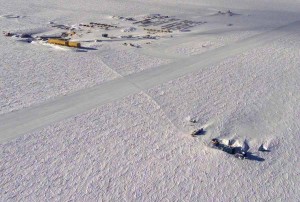Right out the gate, I must highly recommend the work of Mr. Nicholas Johnson writer of Big Dead Place and curator of the website of the same name. I started giggling at his tales while I was still in Antarctica and it now helps me maintain a connection to a continent I never expect to see again. Whenever someone wants to know what going Antarctica is really like, I always recommend Big Dead Place because the process of going to and being in Antarctica is about people, not the place. The place itself is cold, strange, absolutely unforgiving, and staggeringly beautiful; what can make it a delight or misery is other people.
And, for good or ill, many of those other people aren’t even there.
In the dawn of Antarctic exploration, you didn’t get to know what happened on a voyage until the ship returned to port. Considering that expeditions regularly got stuck in the winter ice pack, that might have been a matter of months between contact.
By the time of the Admiral Byrd and the Nazis declaring vast tracts of Antarctica to be Neu Scwabia, it was a matter of days until the aircraft in question could get back off the continent to tell tales of dash and daring-do.
With the International Geophysical Year in 1957 and the initiation of Operation Deep Freeze to establish the three modern American stations in Antarctica, constant contact was available via shortwave radio communication but mainly used for station critical operations. Personal communication by radio was limited to emergencies that actually percolated through the military chain of command AND someone decided was worth sharing with someone at the bottom of the Earth (i.e. births & deaths that might require a legal decision). Everything else was limited to the notoriously unreliable US Army Post Office, which can’t get anything to you for the duration of the Antarctic winter anyway.
By my time in at Pole in 2002-2003, internet access was available roughly 16hrs a day with speeds ranging from 200bps to 1Mps depending on which satellite was in the sky. We also had the Iridium satellite phones available to us, so a call home could be made at anytime or, more likely, a call to us. This means that we never really lost contact with home and, much worse, people back at home in America really didn’t get that they were talking to people who were as isolated as it is possible to be and still be on Earth.
The United States’ stations in Antarctica are managed by Raytheon Polar Services Company (RPSC) which, as far as I can tell, is the sole non-military arm of Raytheon. RPSC is run out of a corporate park in Centennial, CO with lovely groomed lawns and cubicle farms. It wouldn’t look out of place in pretty much any commercial/light industrial commerce zone in America. Like any corporate office, they have ice cream socials, baby showers, birthday cake, summer picnics. Group bonding activities. Things that you’d put in the corporate newsletter.

Things you just absolutely cannot fucking do in Antarctica. Sending this newsletter, or worse invitations to these events, during the dead of Antarctic winter just shows a cruel failure to relate to the remote employees you are “distance managing”.
All the normal trappings of corporate America comes with this level of contact: weekly sitreps, quarterly, HR code of conduct announcements, weekly safety meetings, etc. We had a station manager who’s role, nominally, was to make sure that we fulfilled all the demands from the Mother Raytheon back in Colorado. As the year wore on, we had a decidedly less reverent adherence to these demands. I made a point of including horribly inappropriate songs in my sit reps (that song went with April 2003’s sitrep, as I recall). Another person began doing their parts inventories as haiku.
But the safety meetings, that’s where we achieved true virtuosity as we had to submit reports on topics presented and the insights gained. We ran out of topics very early on because, really, there’s only so much going on when you can’t escape and are on caretaker duty. The solution was to start watching movies and then justify this with safety lessons. I had brought my complete DVD collection with me, so were well set. One of the last things I purchased for the collection was the Mystery Science Theater 3000 Collection, Volumes 1-4, which included a DVD full of the safety video shorts. Our very favorite was “Shake Hands With Danger”, a video by the National Safety Council and Caterpillar from the 1970s.
Deep down, this entire post is an excuse just to get you to listen to this song.